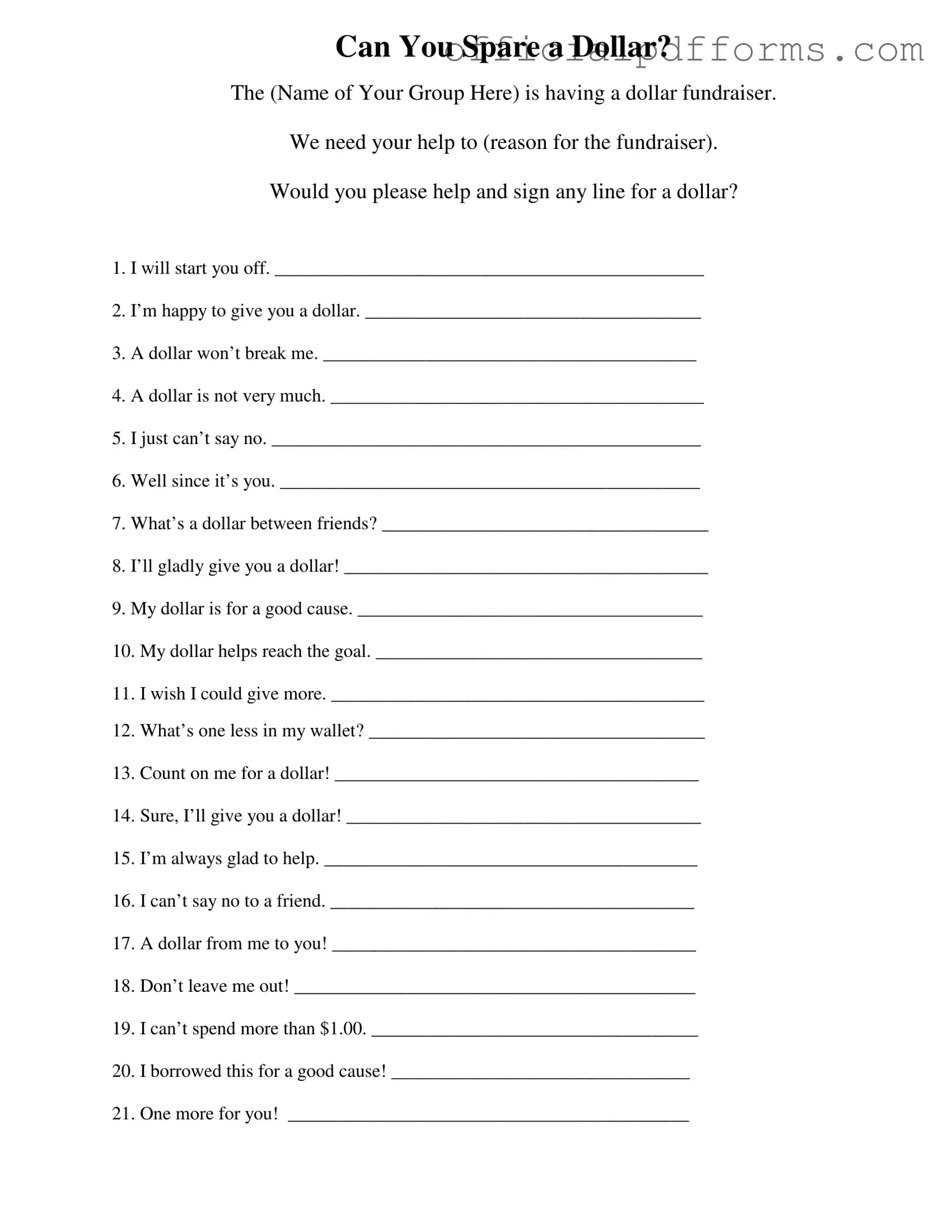The Donated A Dollar form is designed to facilitate a fundraising effort by (Name of Your Group Here). The goal is to collect small donations of one dollar each to support a specific cause. By participating, individuals can contribute to a larger effort in a simple and manageable way.
To fill out the form, simply write your name in the designated area. Then, choose any of the provided lines to indicate your willingness to donate one dollar. You may select a phrase that resonates with you or write your own message. This personal touch can enhance the connection to the cause.
Once you have filled out the form, please turn it in to the designated person or location as indicated on the form. This will ensure that your contribution is properly recorded and counted toward the fundraising goal.
What if I want to donate more than one dollar?
The form specifically asks for a one-dollar donation, but if you wish to contribute more, you are encouraged to do so. You can make a note on the form or communicate your intention to the person collecting the donations. Every dollar counts, and larger contributions are always appreciated.
Is my donation tax-deductible?
Whether your donation is tax-deductible depends on the status of (Name of Your Group Here). If the group is a registered nonprofit organization, your contribution may qualify for a tax deduction. It is advisable to consult with a tax professional or check with the organization for specific details regarding tax deductions.
How will the funds be used?
The funds raised through the Donated A Dollar campaign will be used for (reason for the fundraiser). The specific allocation of the money will be communicated to all contributors, ensuring transparency about how their donations are making a difference.
